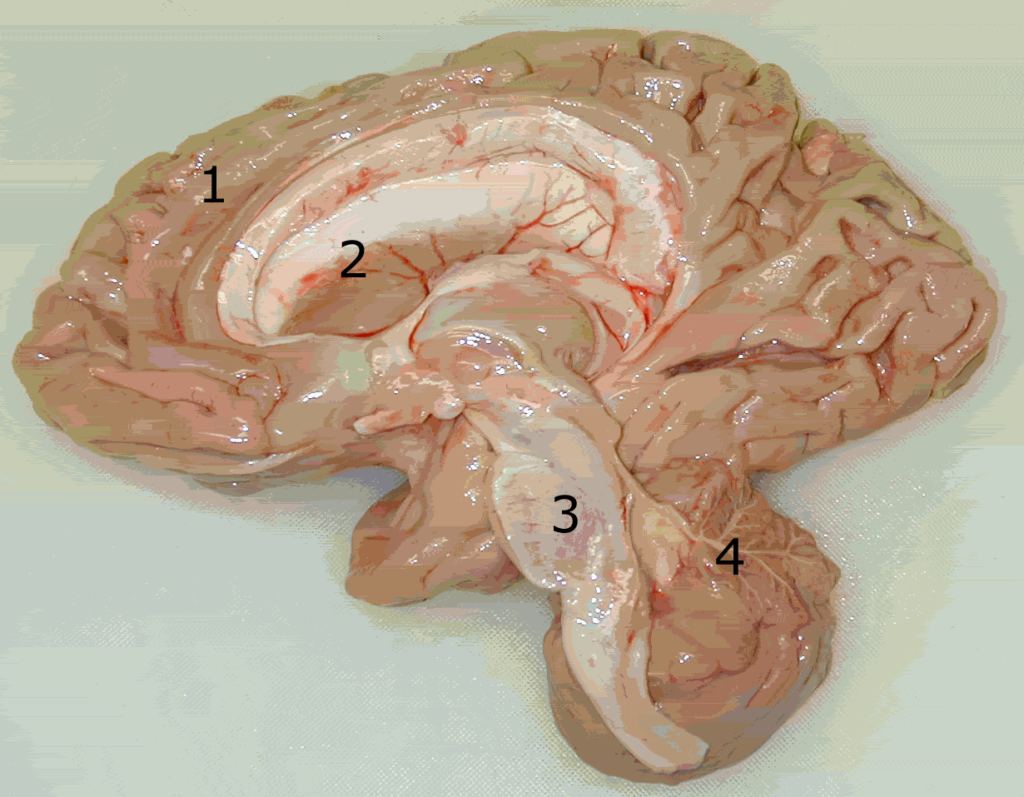The parts of the brain that controls movement involve a hierarchical and interconnected network that includes:
- 1. Motor area of the frontal lobe
- 2. Basal ganglia located inside the cerebral hemispheres
- 3. Pons
- 4. Cerebellum

1 Motor area
The highest level of the network (in direct relation with basal ganglia, the cerebellum and the pons)
Initiates the activation of muscles (involuntary movements)
Controls precisely the conscious voluntary movements of hands and fingers (acts directly with the spinal cord)
Play a pivotal role in the learning of various motor skills
2 Basal ganglia (not visible in the picture)
Closely related to motor area
Control tone and regulate involuntary movements by modulating strength and direction.
Contribute to perform complex movements
Participate in the acquisition of motor skills
3 Pons
Connects the brain to the spinal cord
Involved in body tone that is necessary to be kept upright
Involved in the control of ocular and facial movements
Involved in physiological regulations (breathing, blood pressure…)
4 Cerebellum
Closely linked to motor area and pons
Modulates and coordinates voluntary movements initiated by motor area in order to be correctly accomplished (in particular fast movements)
Maintains balance and posture
Role in learning and acquisition of various motor skills
This brain network (and in particular basal ganglia) intervenes not only in the control of movement but also in learning and acquisition of motor skills (for example to serve in tennis, to change gears in a car, or to use a spoon): we say that this network plays a role in the functioning of the implicit memory 1
1 Implicit memory (that includes procedural memory) is opposed to explicit memory (also called declarative memory) since the former one consists of recalling personal events and facts in a specific context.
To summarize
Implicit (procedural) memory = learning of motor skills
Explicit memory = learning and use of knowledge about facts (semantic knowledge) and events (episodic memory)
Implicit memory is preserved during normal brain aging and in people with Alzheimer’s disease (contrary to explicit memory). It is however disturbed in people that suffer from diseases caused by the destruction of basal ganglia (such as Parkinson’s and Huntington’s diseases).
